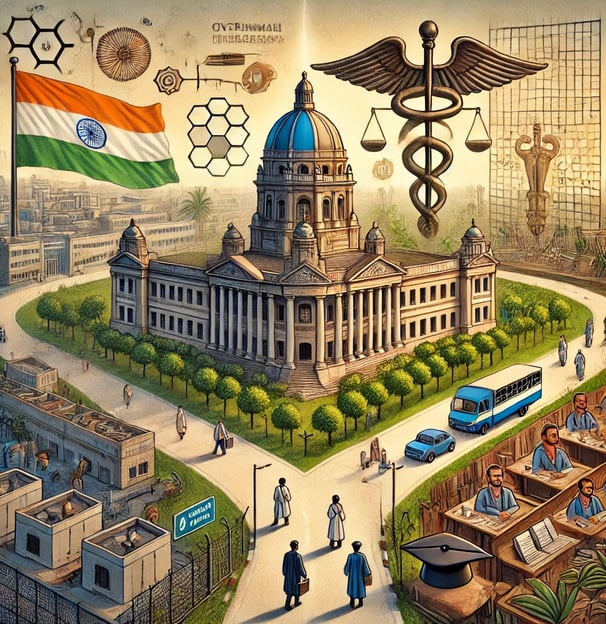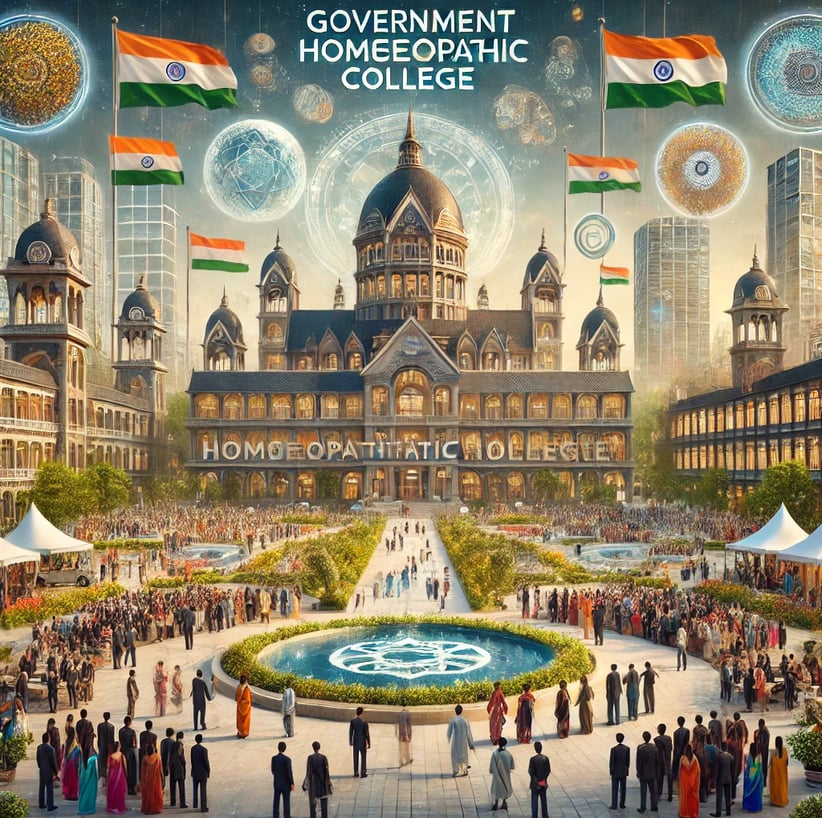The Future of Government Homoeopathic Colleges in India: Trends and Challenges in the Context of NEP 2020 and the Push for Internationalization
This article examines the future of government homoeopathic colleges in India in the context of the National Education Policy (NEP) 2020 and the increasing push for internationalization. It highlights the potential opportunities these institutions have to attract international students and enhance their global standing by leveraging India's strengths in alternative medicine. However, the article also underscores the significant challenges posed by systemic corruption in faculty recruitment, which threatens the credibility and survival of these colleges. The discussion outlines potential trends, such as increased international interest, a shift toward privatization, and the risk of closures for underperforming institutions, emphasizing the urgent need for reforms to realize India's educational ambitions.
8/21/20244 min read
The Future of Government Homoeopathic Colleges in India: Trends and Challenges in the Context of NEP 2020 and the Push for Internationalization


Abstract
This article explores the potential future trends and challenges facing government homoeopathic colleges in India in light of the National Education Policy (NEP) 2020 and the broader push for the internationalization of Indian higher education. With the increasing focus on attracting international students and enhancing the quality of education in alternative systems of medicine, the role of these institutions is at a critical crossroads. While opportunities exist to excel in the global market, especially in fields like Ayurveda and Homoeopathy, the persistence of systemic corruption in faculty recruitment could lead to the closure of underperforming colleges. This article examines the impact of these developments on undergraduate and postgraduate programs in homoeopathy, highlighting the need for reforms to achieve India's vision of becoming a "Vishwa Guru" in education.
Introduction
India's ambition to become a global leader in education, as outlined in the NEP 2020, has brought renewed focus on the internationalization of higher education. While much of the discourse has centered on STEM (Science, Technology, Engineering, and Mathematics) fields, there is a growing recognition that India’s unique strengths in areas like Ayurveda, Yoga, Unani, Siddha, and Homoeopathy offer untapped potential for attracting international students. However, the success of these efforts is contingent on addressing the deep-rooted corruption in faculty recruitment that plagues many government homoeopathic colleges. This article explores the future trends and patterns in homoeopathic education in India, with a focus on the implications of the NEP 2020 and the push for internationalization.
Current Challenges in Government Homoeopathic Colleges
Government homoeopathic colleges in India, have been marred by systemic corruption, especially in faculty recruitment. Recent ethnographic findings have highlighted the manipulation of eligibility criteria, concealment of reservation quotas, and fraudulent experience certifications from private as major issues that undermine the quality of education. These practices not only erode public trust but also diminish the credibility of the institutions on the global stage.
The NEP 2020’s focus on internationalization presents both opportunities and risks for these institutions. On one hand, there is potential to attract international students to study alternative systems of medicine like homoeopathy, particularly if the institutions can offer high-quality education with eminent faculty. On the other hand, without significant reforms to address corruption, these colleges risk closure due to their inability to compete with private institutions and Foreign Higher Education Institutions (FHEIs) entering the Indian market.
Opportunities in the NEP 2020 for Homoeopathic Education
The NEP 2020 encourages the establishment of FHEIs in India and promotes the international expansion of Indian universities. For government homoeopathic colleges, this represents a crucial juncture. There is a significant opportunity to leverage India’s rich tradition in alternative medicine to attract international students, particularly those interested in short courses or postgraduate programs in homoeopathy.
Fields like Ayurveda and Yoga have already seen interest from international students, and homoeopathy could follow suit, provided the system is corruption-free and capable of offering high-quality education. The integration of transdisciplinary approaches, medical integration, and the philosophy of medicine into the curriculum could further enhance the appeal of these programs, attracting foreign MD graduates who seek to expand their expertise in alternative medicine.
Potential Trends and Patterns in Homoeopathic Education
1. Increased International Interest in Alternative Medicine Programs
The internationalization efforts under the NEP 2020 could lead to a surge in interest from foreign students in homoeopathy and other alternative medicine disciplines. However, this is contingent on the ability of these institutions to offer programs that are both rigorous and free from the corrupt practices that currently plague the system.
2. Shift Towards Privatization and FHEIs
As FHEIs enter the Indian market, there may be a shift in student preference towards private institutions that are perceived to have better governance and higher educational standards. This could result in increased competition for government homoeopathic colleges, which may struggle to retain students unless they implement significant reforms.
3. Potential Closure of Underperforming Colleges
Without reforms, the persistent corruption in faculty recruitment could lead to the closure of underperforming government homoeopathic colleges. The NEP 2020's emphasis on quality and global competitiveness means that institutions unable to meet these standards may not survive in the increasingly competitive landscape.
4. Emergence of Centers of Excellence
Government homoeopathic colleges that successfully reform their recruitment processes and enhance their educational standards could emerge as centers of excellence in alternative medicine. These institutions could attract not only domestic students but also international students, particularly those interested in the unique offerings of Indian traditional medicine.
5. Development of Short Courses for International MD Graduates
There is potential for the development of short courses tailored to international MD graduates who wish to gain expertise in homoeopathy. These programs could serve as a bridge between modern and traditional medicine, offering a unique educational experience that leverages India’s strengths in both fields.
Challenges and Limitations
Systemic Corruption: The entrenched corruption in faculty recruitment poses a significant barrier to the success of homoeopathic colleges in attracting international students. Without addressing these issues, the potential benefits of the NEP 2020 may not be realized.
Quality Assurance: Ensuring that the education provided by government homoeopathic colleges meets international standards is crucial. This requires not only reforms in recruitment but also in curriculum development, infrastructure, and faculty training.
Regulatory Hurdles: The complex regulatory environment in India may pose challenges for both domestic and foreign institutions seeking to establish or expand their presence in the homoeopathic education sector.
Equity and Access: There is a risk that the internationalization of homoeopathic education could primarily benefit urban, affluent students, further marginalizing those from rural and economically disadvantaged backgrounds.
Conclusion
The future of government homoeopathic colleges in India is at a critical crossroads. The NEP 2020 and the push for internationalization present significant opportunities for these institutions to enhance their global standing and attract international students. However, the realization of this potential is contingent on addressing the systemic corruption that currently undermines the quality of education in these colleges. By implementing rigorous reforms and focusing on the unique strengths of India’s Diverse systems of medicine, these institutions can navigate the challenges ahead and emerge as leaders in the global education landscape.
References


My post content


